Root rot is a serious problem for money trees. It is caused by a variety of factors, including overwatering, poor drainage, and compacted soil. Root rot can kill a money tree, so it is important to be aware of the signs and causes. There are several ways to fix root rot, including improving drainage, aerating the soil, and using a fungicide.
What Is Root Rot?
The first step in addressing this issue is to identify the signs of root rot, which include yellowing leaves, wilting, and stunted growth. Root rot is a serious problem that can afflict money trees. Once you have determined that your tree is suffering from root rot, you must take steps to address the problem. This may involve removing the affected roots and replanting the tree in fresh, well-draining soil. With proper care, your money tree can recover from root rot and continue to thrive.
How To Identify Money Tree Root Rot
If you think your money tree has root rot, the first thing you should do is check the roots. There are a few things you can do to save your plant, but it’s important to act quickly. If they’re mushy or black, it’s likely that your plant has root rot.
You’ll also need to remove any affected roots. If you catch root rot early, you may be able to save your money tree by replanting it in fresh, sterile potting mix. If the rot has progressed too far, however, your best bet may be to start over with a new plant.
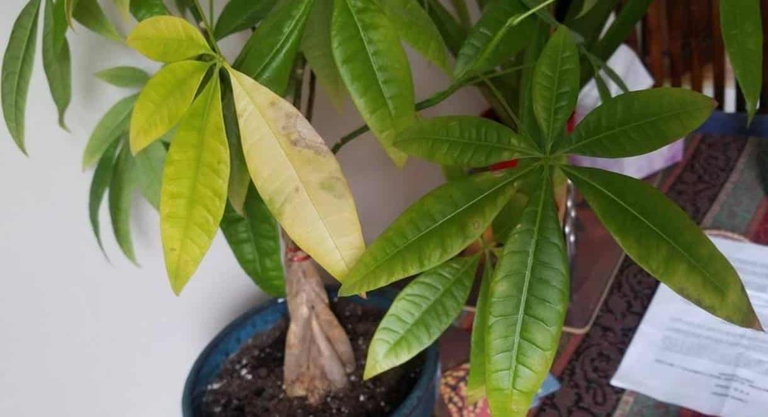
If you think your plant has root rot, take action quickly to save it. Allow the plant to drain thoroughly after watering and don’t let it sit in water. Root rot is often caused by overwatering, so be sure to water your money tree only when the soil is dry to the touch.
Wilting Leaves
Root rot is a serious condition that can kill your money tree. The first step to fixing root rot is to identify the signs and causes. If your money tree’s leaves are wilting, it’s a sign that the plant is suffering from root rot.
The leaves may also fall off the plant. Wilting leaves are the most common sign of root rot. If you see these signs, it’s important to act quickly. The leaves will turn yellow or brown and droop down.
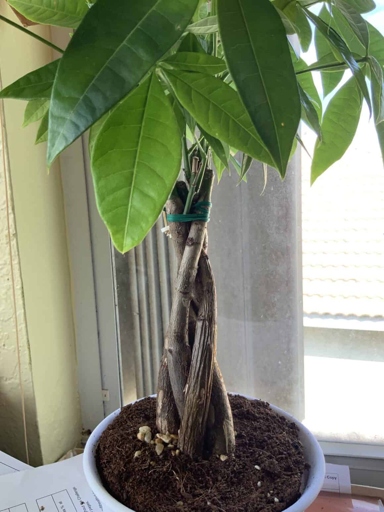
If the drainage in your pot is poor, the water will pool around the roots and cause them to rot. This can happen even if you’re watering the plant correctly. Root rot is caused by overwatering or poor drainage. When the roots of a plant are constantly wet, they start to rot.
To fix root rot, you need to improve the drainage in your pot and make sure you’re not overwatering the plant. With proper care, your money tree will recover and the leaves will stop wilting. If the roots are already rotting, you may need to repot the plant in fresh soil.
Discolored Leaves
If your money tree’s leaves are discolored, it could be a sign of root rot. If left untreated, root rot can kill your money tree. Root rot is a common problem in money trees and can be caused by overwatering, poor drainage, or a lack of oxygen in the roots.
Third, increase the amount of oxygen in the roots by aerating the soil. If the pot doesn’t have drainage holes, add some. Allow the soil to dry out between waterings. There are a few things you can do to treat root rot. You can do this by poking holes in the soil with a chopstick or other sharp object. First, improve the drainage in your money tree’s pot. Second, water your money tree less often.

With proper care, you can fix root rot and save your money tree. If your money tree’s leaves are discolored, it’s important to take action quickly.
Money Tree Trunk Soft
There are a few things you can do to save your plant. If your money tree has root rot, don’t despair.
But if you see healthy, white roots mixed in with the damaged ones, your plant has a chance. First, take a look at the roots. If they’re black and mushy, they’re probably beyond saving.
Next, carefully remove the plant from its pot. Rinse the roots off with clean water, and trim away any black or mushy roots.
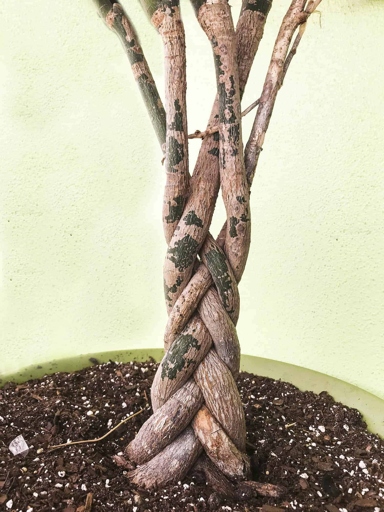
Water your plant thoroughly, and then let it drain. Now it’s time to replant. Choose a pot that’s just big enough for the roots, and use fresh, well-draining potting mix.
Finally, give your money tree some TLC. With a little luck, your plant will soon be on the road to recovery. Place it in a bright spot, out of direct sunlight, and water it when the top inch of soil feels dry.
Slowed Growth
If you think your money tree has root rot, there are a few things you can do to try to fix the problem. If you notice that your money tree’s growth has slowed, it could be a sign of root rot. Root rot is a common problem in money trees and can be caused by overwatering, poor drainage, or compacted soil.
If they are brown or mushy, it’s likely that your tree has root rot. If the roots are only slightly brown, you may be able to save your tree by watering it less often. Cut away any affected roots and replant your tree in fresh, well-draining soil. First, check the roots of your tree.
Root stimulators are available at most garden centers and can help your tree recover from root rot. You can also try using a root stimulator to encourage new growth.
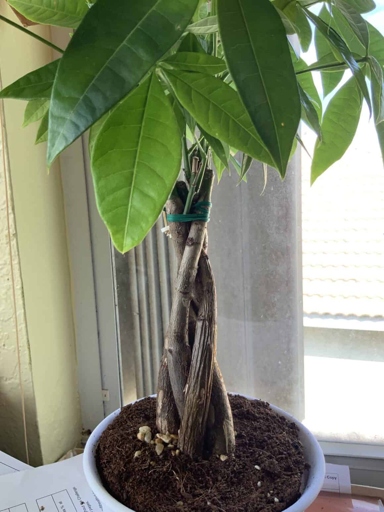
With a little care, you can often save your tree and get it back to its original healthy state. If you think your tree has root rot, don’t despair.
Mildew-y Smell
Root rot is a common problem in money trees and can be caused by a number of factors, including overwatering, poor drainage, and compacted soil. If your money tree has a mildew-y smell, it’s likely that the plant has root rot.
If you suspect that your money tree has root rot, the first step is to check the roots. At this point, you have two options: you can try to save the plant by trimming away the affected roots and replanting in fresh soil, or you can dispose of the plant and start over with a new one. If they’re black or mushy, it’s likely that the plant is indeed suffering from root rot.
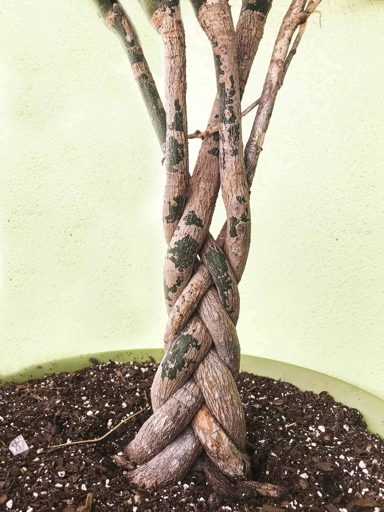
Once you’ve trimmed away the affected roots, replant the tree in fresh, well-draining soil and be sure to water it properly. If you decide to try to save your money tree, it’s important to act quickly. The longer the plant sits in wet, compacted soil, the more damage the roots will sustain. With any luck, your money tree will make a full recovery.
Inspect The Roots
If you think your money tree has root rot, inspect the roots. Look for brown or black roots, or roots that are mushy or falling off. If you see any of these signs, your plant likely has root rot.
You may also need to water your money tree less often, as too much water can lead to root rot. To fix root rot, you’ll need to replant your money tree in fresh, well-draining soil. Be sure to remove any affected roots before replanting.

If you catch root rot early, your money tree may be able to recover. With proper care, your plant will soon be healthy and thriving.
Causes Of Money Tree Root Rot
One of the most common is overwatering. There are a few different things that can cause root rot in money trees. When the roots of the tree are constantly wet, they start to break down and rot. This can happen even if you’re using well-draining soil.
Another cause of root rot is using too much fertilizer. This is especially true of chemical fertilizers. If the roots are constantly bombarded with nutrients, they can start to break down.
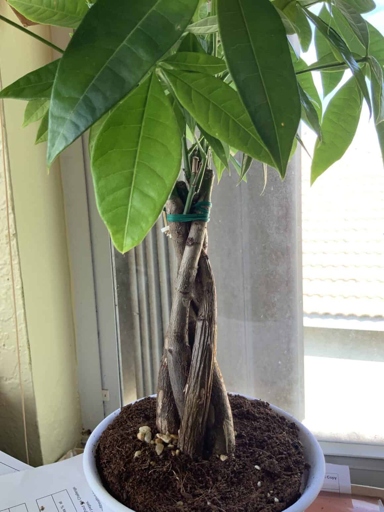
Finally, root rot can also be caused by a lack of light. If the tree isn’t getting enough light, the roots can start to die off. This is usually only a problem if the tree is growing in a very dark place.
If you think your money tree has root rot, the first thing you need to do is figure out what’s causing it. Once you know that, you can take steps to fix the problem.
Overwatering
This is especially true for money trees, which are especially susceptible to root rot. When it comes to houseplants, one of the most common problems is overwatering.
If you think your tree may be overwatered, check the roots for signs of rot. The first step to preventing it is to water your tree only when the soil is dry. If they are black and mushy, it’s time to take action. Root rot is a serious problem that can kill your money tree.
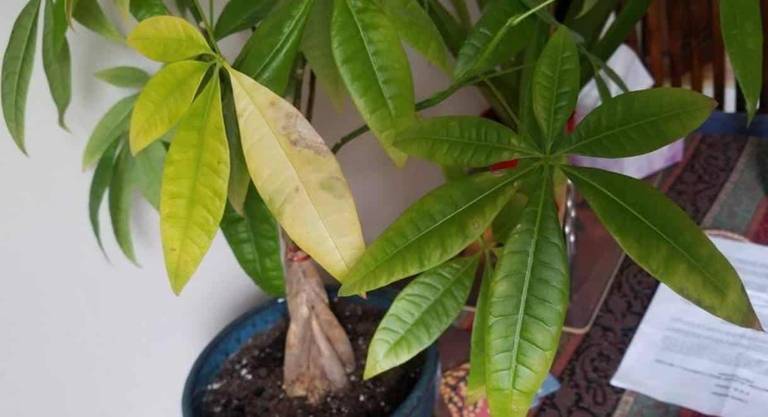
There are a few things you can do to save an overwatered money tree. If the roots are already rotted, you’ll need to repot the tree in fresh, dry soil. First, try to reduce the amount of water you’re giving it. If the soil is still wet, you can try aerating it or adding more drainage.
With a little care, you can keep your money tree healthy and happy for years to come. Just be sure to watch out for the signs of overwatering, and take action quickly if you think your tree is in trouble.
How To Fix Overwatering
If it’s soggy or feels waterlogged, you’re probably giving it too much water. Let the soil dry out completely before watering again. If you think you’re overwatering your money tree, the first step is to check the soil. You can also try to improve drainage by adding perlite or sand to the potting mix.
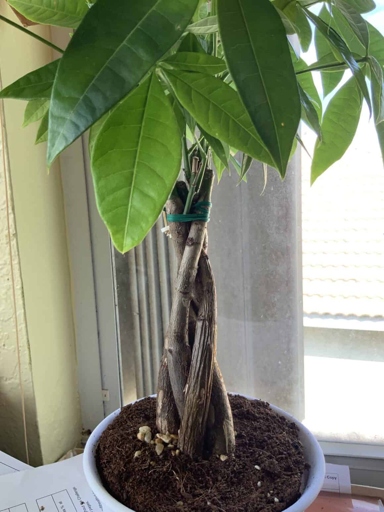
If your money tree has already developed root rot, the best course of action is to remove it from the pot and replant it in fresh, dry soil. Be sure to dispose of the old soil and pot, as they may be contaminated with fungal spores.
Allowing the soil to dry out completely between waterings will help prevent root rot in the future. Once your money tree is replanted, be sure to water it only when the soil is dry.
Poor Drainage
If you notice that your money tree’s leaves are yellowing, wilting, or falling off, it could be a sign of poor drainage. There are a few things you can do to fix the problem.
If they are, it’s likely that the plant has root rot, which is caused by too much moisture. First, check the roots to see if they’re mushy or black.
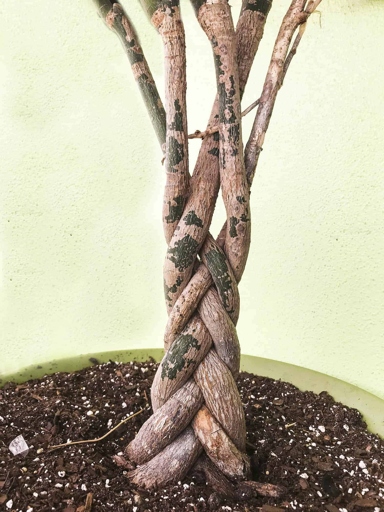
Be sure to use a potting mix that contains sand or perlite to help with drainage. To fix the problem, you’ll need to replant your money tree in a pot with better drainage.
You may also need to water your plant less often. Allow the soil to dry out completely between watering.
If you notice that your money tree’s leaves are yellowing, wilting, or falling off, it could be a sign of poor drainage. There are a few things you can do to fix the problem.
If they are, it’s likely that the plant has root rot, which is caused by too much moisture. First, check the roots to see if they’re mushy or black.
Be sure to use a potting mix that contains sand or perlite to help with drainage. To fix the problem, you’ll need to replant your money tree in a pot with better drainage.
You may also need to water your plant less often. Allow the soil to dry out completely between watering.
How To Fix Poor Drainage
Once the affected roots have been removed, you can replant the money tree in fresh, well-draining soil. This can be done by gently digging around the plant and carefully removing the roots that are black or mushy. First, you will need to remove the affected roots. Be sure to water the plant regularly, but do not over-water as this can lead to further root rot. If the root rot is severe, it is best to consult with a professional to ensure that your money tree is properly cared for. If you have a money tree with root rot, there are a few things you can do to try and save the plant.
Soil With Poor Drainage Capacity
The condition is caused by a lack of drainage in the soil, which prevents the roots from getting the oxygen they need. This can lead to the death of the tree. Root rot is a serious problem for money trees.

Money trees need bright, indirect light to thrive. Water the tree deeply once a week, and make sure the soil is always moist but not soggy. There are a few things you can do to fix the problem. Finally, make sure the tree has enough light. First, make sure that the soil you’re using has good drainage capacity. Second, make sure the tree is getting enough water. If it doesn’t, you can add some organic matter to it, such as compost or peat moss.
If you take these steps, you should be able to fix the problem of root rot in your money tree.
How To Address Soil With Poor Drainage Capacity
Root rot is caused by a lack of drainage in the soil. First, you need to identify the problem. This can be due to a variety of reasons, including compacted soil, poor drainage in the pot, or a plant that is too big for its pot. If you can identify the problem, you can take steps to fix it. If your money tree has root rot, there are a few things you can do to try and save it.
Compacted soil can be loosened by aerating it with a fork or by adding sand or organic matter to improve drainage. If the plant is too big for its pot, you will need to transplant it into a larger pot. If the pot does not have adequate drainage holes, you can drill additional holes or repot the plant into a pot with better drainage.
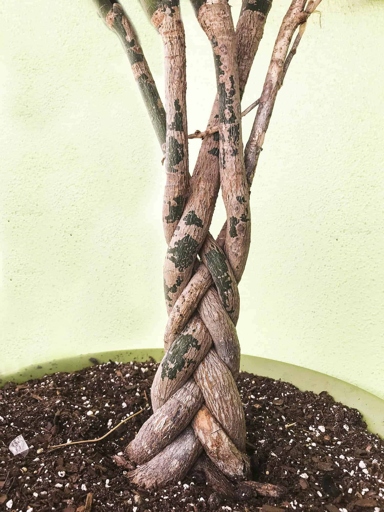
Allow the soil to dry out completely between waterings and do not fertilize the plant until it has recovered from the root rot. With proper care, your money tree should be able to recover from root rot. Once you have addressed the drainage issue, you can try to save the money tree by watering it less frequently.
Pathogenic Infection
The most common symptom of pathogenic infection is root rot, which can kill a money tree within weeks. There are several ways to prevent pathogenic infection, including: Pathogenic infection is a serious problem for money tree growers.
Sanitize all tools and equipment before use. 1.

Avoid using contaminated soil or water. 2.
3. Keep the growing area clean and free of debris.
4. Inspect plants regularly for signs of infection.
Destroy infected plants immediately. 5.
By following these simple guidelines, money tree growers can significantly reduce the risk of pathogenic infection.
How To Avoid Pathogenic Infections
Second, avoid handling sick or dead animals, as they may be carrying infectious diseases. If you must work with contaminated materials, be sure to wear gloves and wash your hands thoroughly afterwards. By taking these simple steps, you can avoid becoming infected with a pathogenic disease. First, it is important to avoid contact with contaminated soil or water. Pathogenic infections can be avoided by taking some simple precautions. Finally, be sure to cook food thoroughly to kill any potential pathogens.
Too Large of A Pot
To fix root rot, you’ll need to remove the affected roots and replant your tree in fresh, well-draining soil. If you notice that your money tree’s leaves are turning yellow, wilting, and falling off, it’s likely that your plant has root rot. Root rot is caused by overwatering, which can lead to fungal growth. If you notice any more signs of root rot, you may need to consult a professional. Be sure to water your tree regularly, but don’t overwater it.
How To Fix Pot Size
If you notice that your money tree’s leaves are wilting, drooping, or turning yellow, it’s likely that the plant has root rot. Root rot is a common problem in money trees and can be caused by overwatering, poor drainage, or compacted soil.

If the root rot is severe, you may need to trim away some of the affected roots. You may also need to repot the tree into a larger pot. To fix root rot, you’ll need to improve the drainage around your money tree and make sure that the potting mix is light and airy.
Low Temperature
Root rot is a serious problem for money trees, and can often be fatal. The first step in preventing root rot is to identify the signs and causes.
This is often accompanied by yellowing or browning leaves, and eventually the leaves will fall off. The tree may also have fewer leaves than usual, and the leaves that do remain may be smaller than normal. The most common sign of root rot is wilting leaves.
The cause of root rot is usually overwatering. This is often compounded by poor drainage, which can cause the roots to sit in water for too long. If the tree is watered too often, the roots will start to rot. Money trees are native to tropical climates and do not need a lot of water.
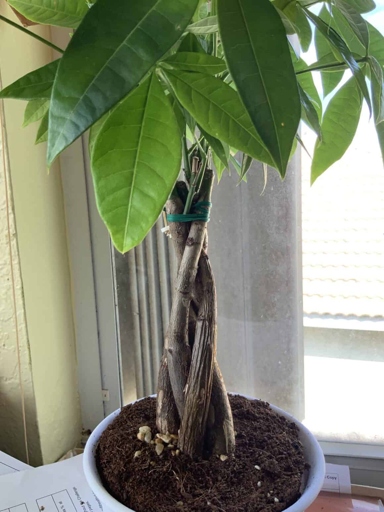
Allow the soil to dry out completely before watering again. If you think your money tree has root rot, the first step is to stop watering it. If the tree is in a pot, you may need to repot it with fresh, dry soil. In severe cases, the tree may need to be removed and destroyed.
How To Address Low Temperature
If they’re mushy or black, it’s likely that the plant has root rot. If the plant is still showing signs of root rot, you may need to use a fungicide to kill the fungus. The next step is to replant the money tree in fresh, well-draining soil. Be sure to water the plant regularly, but don’t overdo it, as too much water can cause root rot. If you think your money tree has root rot, the first step is to check the roots.
Watering During Dormant Period
Watering during the dormant period is important to prevent root rot in money trees. Water the tree once a week, using a watering can or hose, and apply a layer of mulch around the base of the tree to help retain moisture. The roots of the tree need to be kept moist, but not too wet, during this time.
How To Address Watering During Dormant Period
If the roots are not properly hydrated, they will begin to rot and the tree will eventually die. Watering during the dormant period is crucial to the health of your money tree. There are a few things you can do to ensure that your tree gets the water it needs during this time.
First, make sure that you are watering the tree deeply and evenly. The roots need to be able to absorb the water, so it is important to water slowly and allow the water to penetrate the soil.
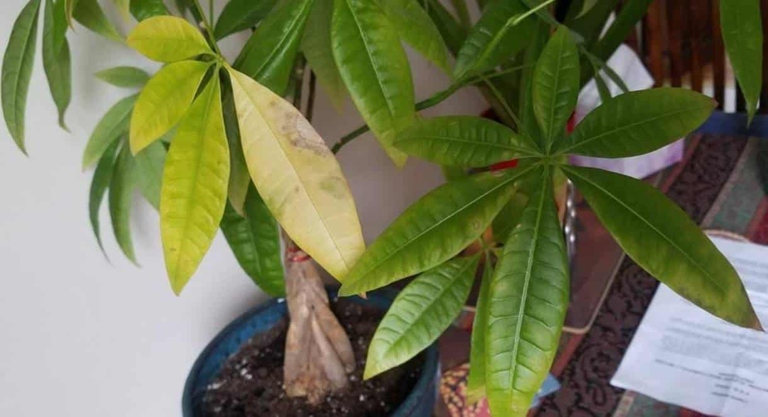
If it is too dry, the roots will not be able to absorb the water properly. Second, check the soil regularly to make sure that it is not drying out. The soil should be moist, but not soggy.
Finally, make sure that you are using a high-quality potting mix that drains well. If the soil is too dense, the roots will not be able to get the oxygen they need and will begin to rot.
By following these simple tips, you can ensure that your money tree stays healthy during the dormant period.
How To Save Money Tree From Root Rot
If you think your tree may have root rot, there are some things you can do to save it. Root rot is a serious problem for money trees.

If you see any of these signs, it’s important to act quickly. These include yellowing or wilting leaves, slow growth, and discolored roots. First, you need to identify the signs of root rot.
If you can correct the problem, your tree may be able to recover. Next, you need to determine the cause of the root rot. This is usually due to too much water or poor drainage.
Finally, you need to take action to save your tree. With proper care, your money tree can recover from root rot and continue to thrive. This may include removing affected roots, improving drainage, and adding more air to the roots.
Clearing The Damage
There are steps you can take to clear the damage and get your tree back on track. If your money tree has root rot, don’t despair.
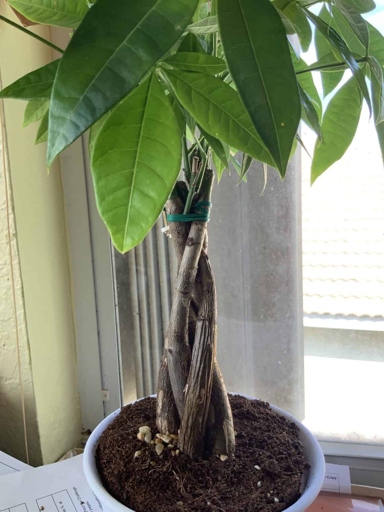
Root rot is caused by a build-up of water in the soil. If you’re using a clay pot, make sure it has a drainage hole in the bottom. If you’re using a plastic pot, drill holes in the bottom to allow water to escape. The first step in clearing root rot is to improve the drainage of the pot. This can happen if you water your tree too often, or if the pot doesn’t have proper drainage.
You may also need to repot the tree in fresh soil. Once you’ve improved the drainage, you can start to clear the damage. Gently remove the tree from its pot and wash the roots with clean water. Trim away any roots that are black or mushy.
With a little care, your money tree will soon be back to its healthy self.
Repotting
When it comes to houseplants, one of the most common problems is root rot. If you think your money tree has root rot, there are a few things you can do to try and save it. Root rot is caused by too much water and can lead to yellowing leaves, wilting, and eventually death.
You may also want to add a root stimulator to the potting mix to encourage new root growth. Be sure to remove any affected roots and discard them. The first step is to repot the plant in fresh, well-draining potting mix.

Once you’ve repotted your money tree, water it only when the soil is dry to the touch. Allow the plant to dry out completely between watering to avoid further root rot. With proper care, your money tree should recover and continue to thrive.
Using The Appropriate Soil Mix
Once you’ve identified the appropriate soil mix, you can replant your money tree in a new pot with fresh soil. Root rot is a common problem in money trees, and it’s important to take action quickly to save the plant. Be sure to water the plant regularly, but don’t overdo it. The first step is to identify the type of soil mix that you’re using. If you notice that your money tree’s leaves are wilting, discolored, or falling off, it’s likely that the plant has root rot. If the mix is too dense, it can hold too much water and lead to root rot. The best soil mix for money trees is one that is well-draining and contains a mix of sand, perlite, and peat moss. If you’re not sure how to make your own mix, you can purchase a pre-made mix at your local garden center. Be sure to follow the directions on the label carefully. Too much water can also lead to root rot. With the proper care, your money tree should recover from root rot and continue to thrive. If you notice that your money tree’s leaves are still wilting or falling off, you may need to treat the plant with a fungicide.
Watering After Repotting
Avoid getting water on the leaves, as this can cause leaf rot. Allow the water to slowly seep into the soil, and be sure to water the entire root ball. Avoid using cold water, as this can shock the roots and cause root rot. When you water your money tree after repotting, be sure to use lukewarm water.
Care After Repotting
Root rot is caused by too much water and not enough drainage. When you notice that your money tree’s leaves are yellowing or falling off, it’s a sign that the plant is stressed. If you think your money tree has root rot, the first thing you should do is repot the plant. One of the main causes of stress in money trees is root rot.
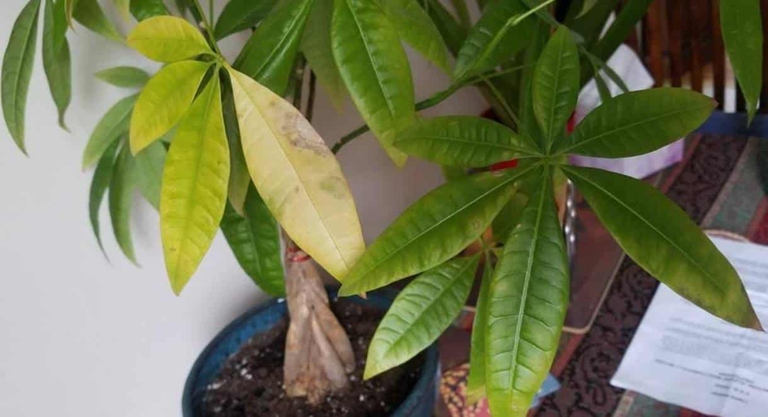
To repot your money tree, start by removing the plant from its current pot. Once you’ve removed the dead roots, replant your money tree in a new pot with fresh soil. These roots are already dead and won’t be able to recover. Be sure to use a pot with drainage holes to help prevent root rot in the future. Inspect the roots and cut away any that are black or mushy.
Try moving it to a brighter location or giving it less water. If you notice the leaves yellowing or falling off again, it’s a sign that the plant is still stressed. With a little care, your money tree should recover and thrive. After you’ve repotted your money tree, water it deeply but sparingly. Allow the soil to dry out completely between waterings.
Propagation
Root rot is caused by a build-up of water in the soil, which can lead to the roots of the plant rotting away. When it comes to houseplants, one of the most common problems is root rot. If you think your money tree has root rot, there are a few things you can do to fix the problem.
Cut away any of these affected roots, being careful not to damage the healthy roots. If you see any that are black or mushy, those are the ones that are affected by root rot. The first step is to remove the plant from its pot and inspect the roots.
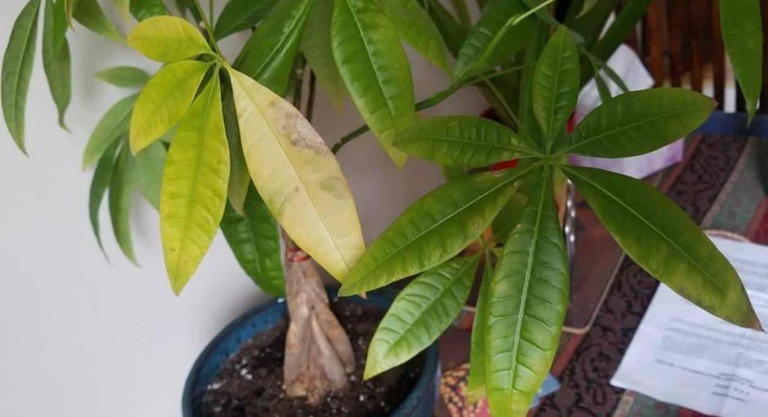
Once you have removed the affected roots, you can replant your money tree in fresh, sterile potting mix. Be sure to water it regularly, but not too much, to avoid the roots getting waterlogged again. With a little care, your money tree should soon be back to its healthy self!
How To Prevent And Control Money Tree Root Rot
Root rot is a common problem in potted plants, and can be caused by overwatering, poor drainage, or compacted soil. If you notice your money tree’s leaves drooping and turning yellow, it’s likely due to root rot.

To prevent root rot, water your money tree only when the top inch of soil is dry. If you’re using a saucer, empty it out after watering. Allow the water to drain freely from the pot, and don’t let the plant sit in water.
Repot the tree in fresh, well-draining potting mix and water it sparingly. Prune away any yellow or brown leaves. Remove the tree from its pot and gently remove any affected roots. If your money tree has already developed root rot, you’ll need to take action to save the plant. With proper care, your money tree should recover from root rot and continue to thrive.
Avoid Waterlogging
This can lead to a number of problems for the plant, including root rot. Waterlogging is a condition that can afflict money trees and other plants. It occurs when the roots of the plant are submerged in water for an extended period of time.
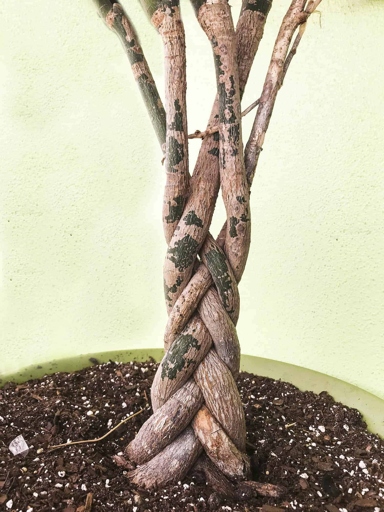
It occurs when the roots of the plant are submerged in water for an extended period of time. This can lead to a number of problems for the plant, including death. Root rot is a condition that can be caused by waterlogging.
To avoid waterlogging, make sure that the roots of your money tree are not submerged in water for extended periods of time. If you notice that the roots are starting to rot, take action to correct the problem immediately.
Watering Schedule
Finally, don’t let the tree sit in water, as this can also lead to root rot. If you follow these simple tips, you should have a healthy, happy money tree. This will help to prevent root rot, which can be a serious problem for money trees. First, let the top inch or so of soil dry out before watering. Second, water your tree slowly and deeply, so that the water has a chance to reach the roots. When it comes to watering your money tree, there are a few things to keep in mind.
Loosen Soil
Once the soil is loosened, be sure to water your money tree only when the top inch of soil is dry. If your money tree’s leaves are wilting, yellowing, or falling off, it may have root rot. This will allow the roots to dry out and start to heal. Root rot is a serious condition caused by too much water and not enough drainage. The first step to fixing root rot is to loosen the soil around the roots.
Plant Rotation
Root rot is a fungal disease that can be caused by overwatering, poor drainage, or compacted soil. If you notice that your money tree’s leaves are wilting, yellowing, or falling off, it could be a sign of root rot.
You may also need to trim away any roots that are blackened or mushy. If the root rot is severe, you may need to start with a new money tree. To fix root rot, you’ll need to remove the affected plant from the pot and replant it in fresh, well-draining soil.
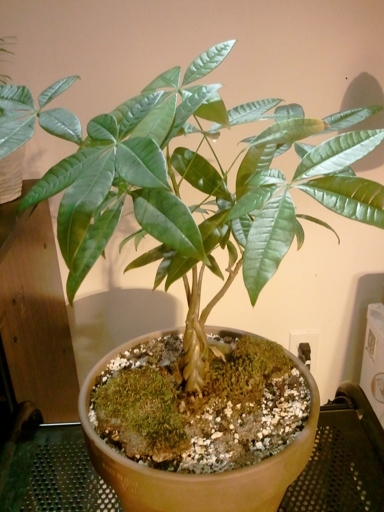
To prevent root rot in the future, be sure to plant your money tree in a pot with drainage holes and water it only when the soil is dry to the touch.
Lighting
These include yellowing leaves, wilting, and stunted growth. If you see any of these signs, it’s important to act quickly. If your money tree has root rot, there are a few things you can do to save it. First, you need to identify the signs of root rot.
Root rot is caused by overwatering, so the first step is to reduce watering. Allow the soil to dry out completely between waterings. If the soil is still wet, it’s important to aerate it to allow excess water to drain away. You can do this by poking holes in the soil with a fork or by using a soil aerator.
Be sure to follow the directions on the label carefully. The best way to do this is with a fungicide. You can find fungicides at your local garden center or online. Once you’ve reduced watering, you need to treat the affected roots.

With proper care, your money tree should recover from root rot and continue to thrive.
How Do You Revive A Dying Money Tree?
First, check the roots to see if they’re mushy or discolored. If you think your money tree is suffering from root rot, there are a few things you can do to revive it. With a little care, your money tree should be back to good health in no time. If your tree is still struggling, you may need to give it a bit more time and attention, including regular watering and fertilizing. If they are, you’ll need to trim away the affected roots and repot the tree in fresh, well-draining soil. You can also try adding a fungicide to the soil to prevent the rot from spreading.
Frequently Asked Questions
What is root rot?
Root rot is a condition that affects plants when their roots are unable to absorb water and nutrients from the soil. This can be caused by a number of factors, including overwatering, poor drainage, and compacted soil.
What are the signs of root rot?
The most common sign of root rot is wilting. This is often accompanied by yellowing or browning leaves, and in severe cases, the plant may collapse and die.
What are the causes of root rot?
The most common cause of root rot is overwatering. This can happen when the plant is watered too frequently, or when the pot does not have adequate drainage. Poor drainage can also lead to compacted soil, which can prevent the roots from getting the oxygen they need to stay healthy.
How can I prevent root rot?
The best way to prevent root rot is to water your plants only when the soil is dry to the touch. Be sure to check the drainage of your pots, and if necessary, add more holes to the bottom to allow water to drain more easily. You can also add a layer of gravel or rocks to the bottom of the pot to help with drainage.
How can I treat root rot?
If your plant is already showing signs of root rot, it is important to act quickly. Remove the plant from the pot and carefully inspect the roots. If they are black or mushy, they will need to be removed. After trimming away the affected roots, replant the money tree in fresh, well-draining soil. Water only when the soil is dry to the touch, and be sure to give the plant plenty of light.
Final thoughts
If you think your money tree has root rot, the first step is to check the roots. If they are discolored or mushy, you will need to take action. The next step is to replant your tree in fresh, well-draining soil. Be sure to water it regularly, but do not overdo it. With a little care, your money tree should be back to good health in no time.
